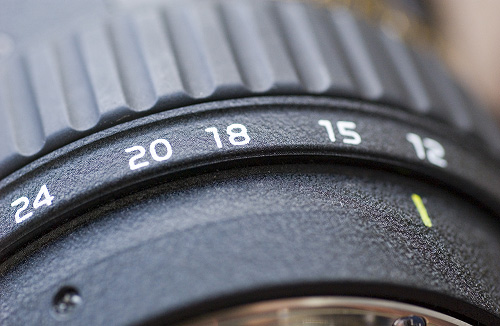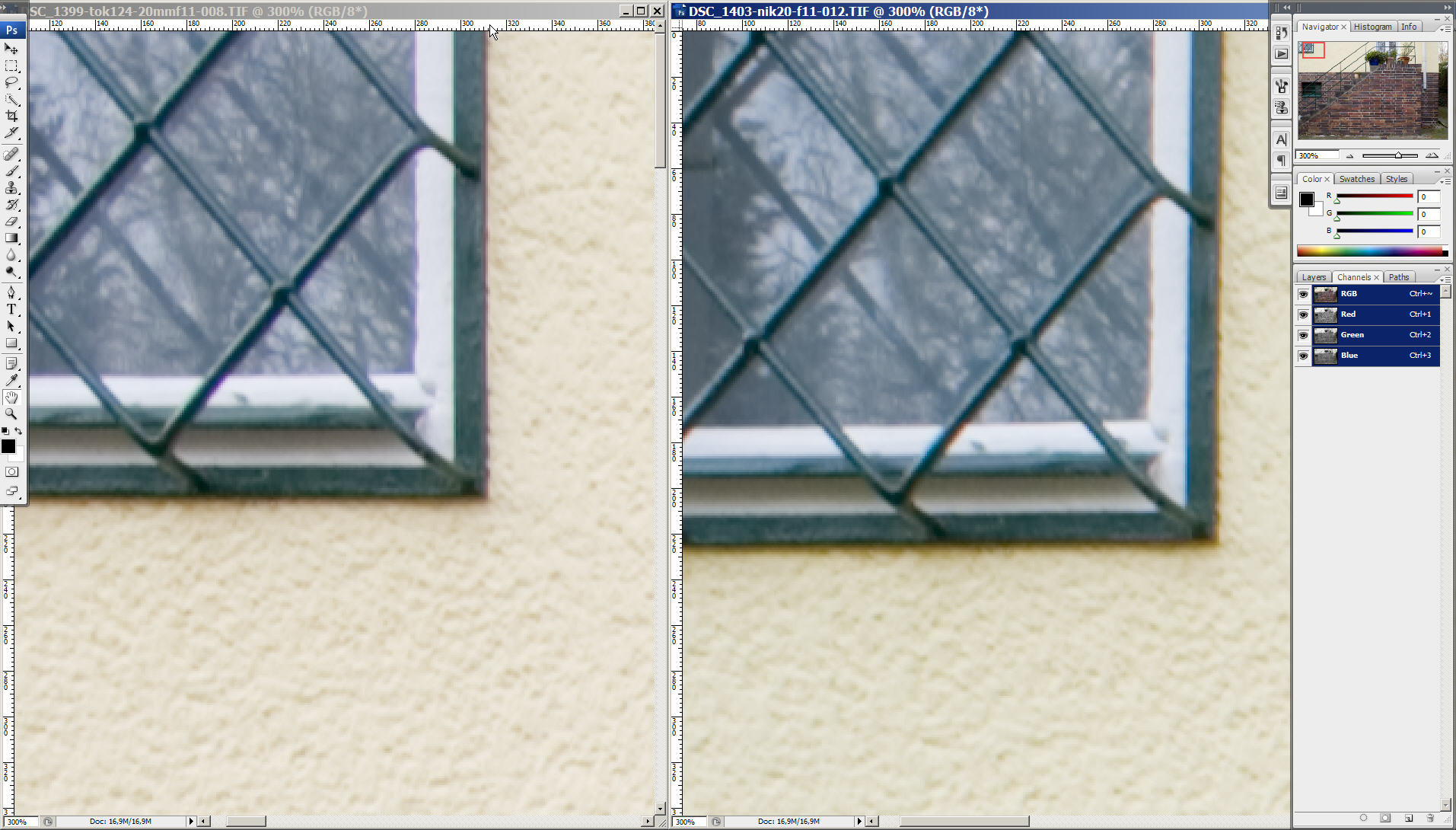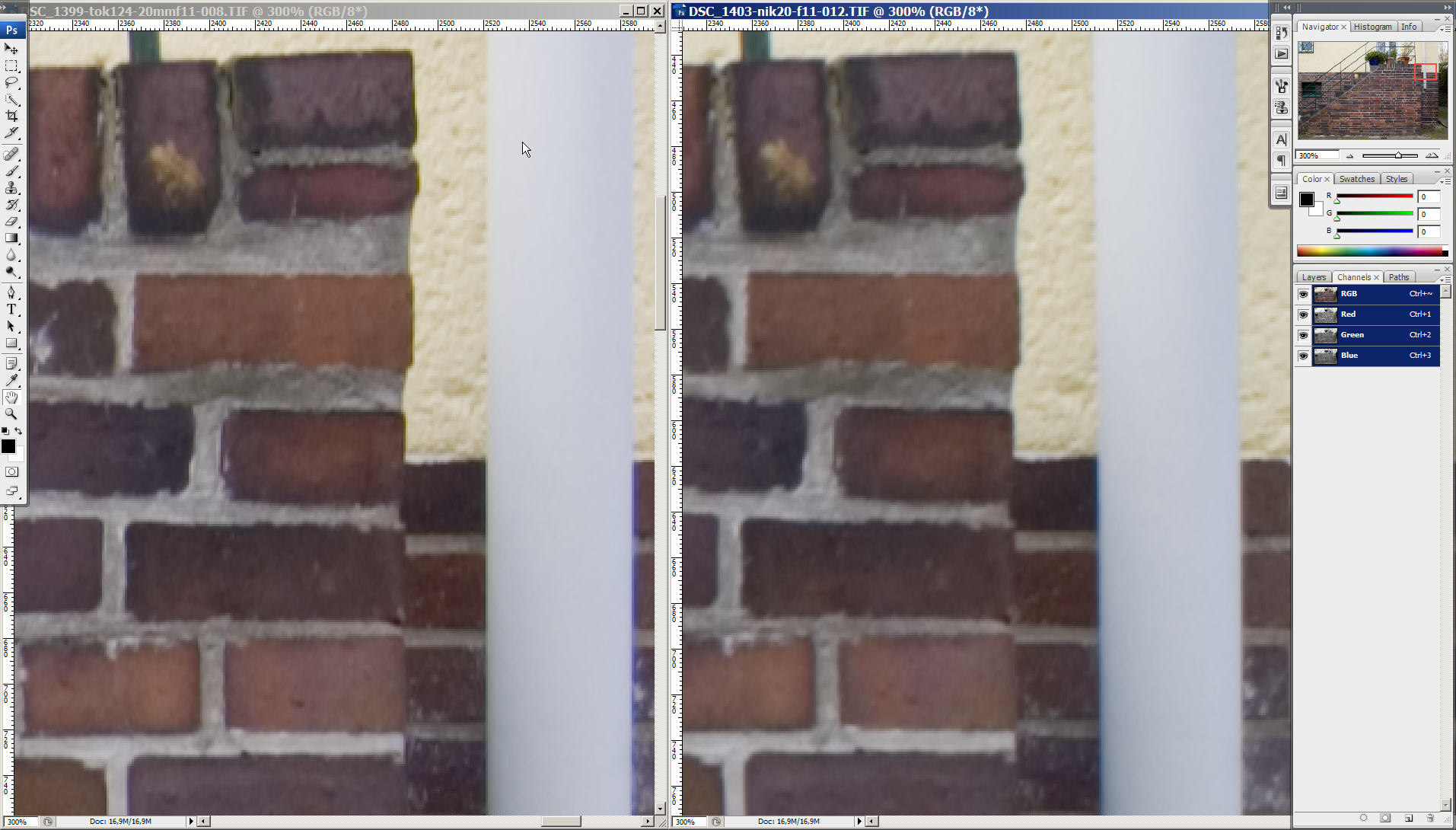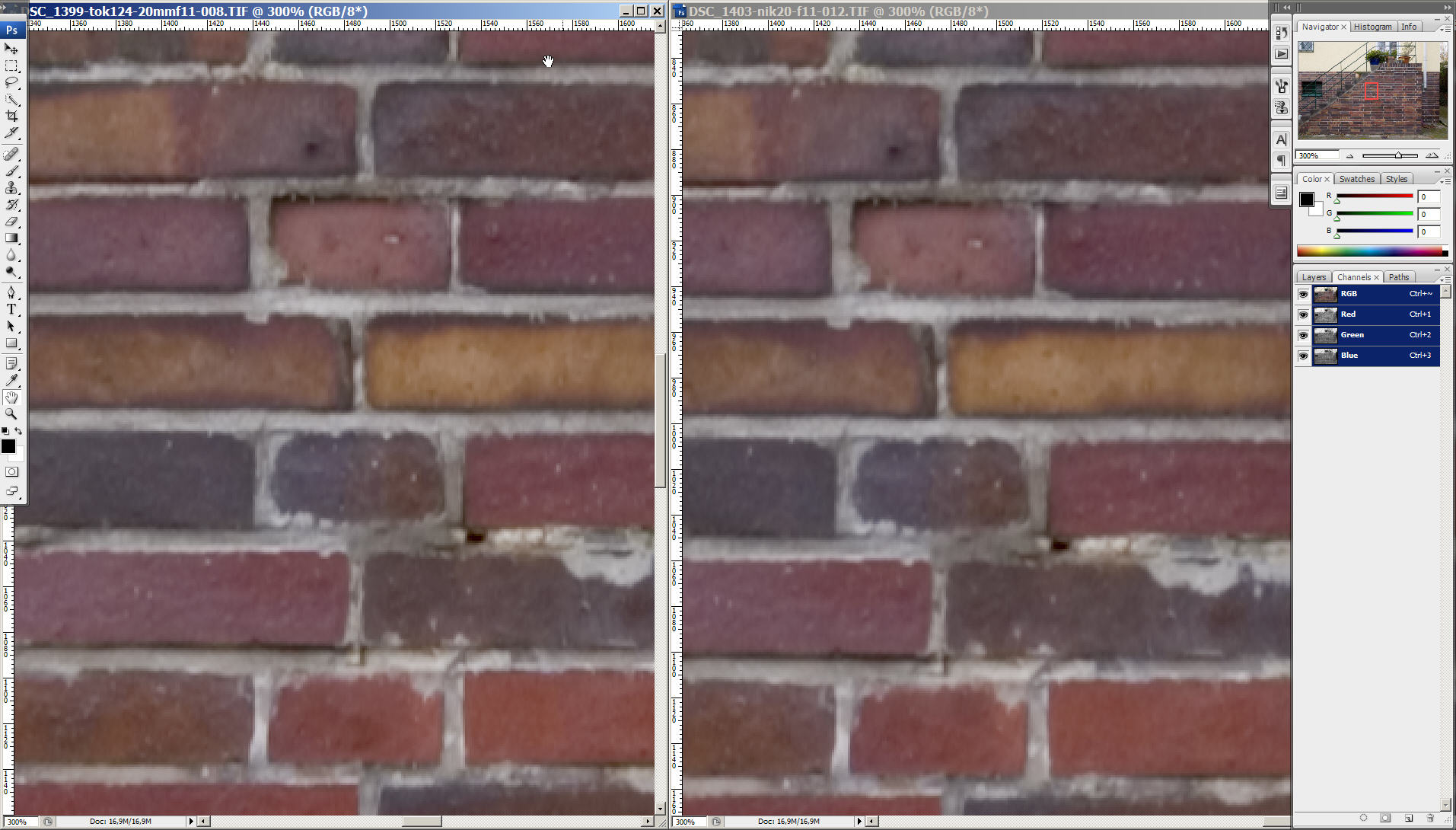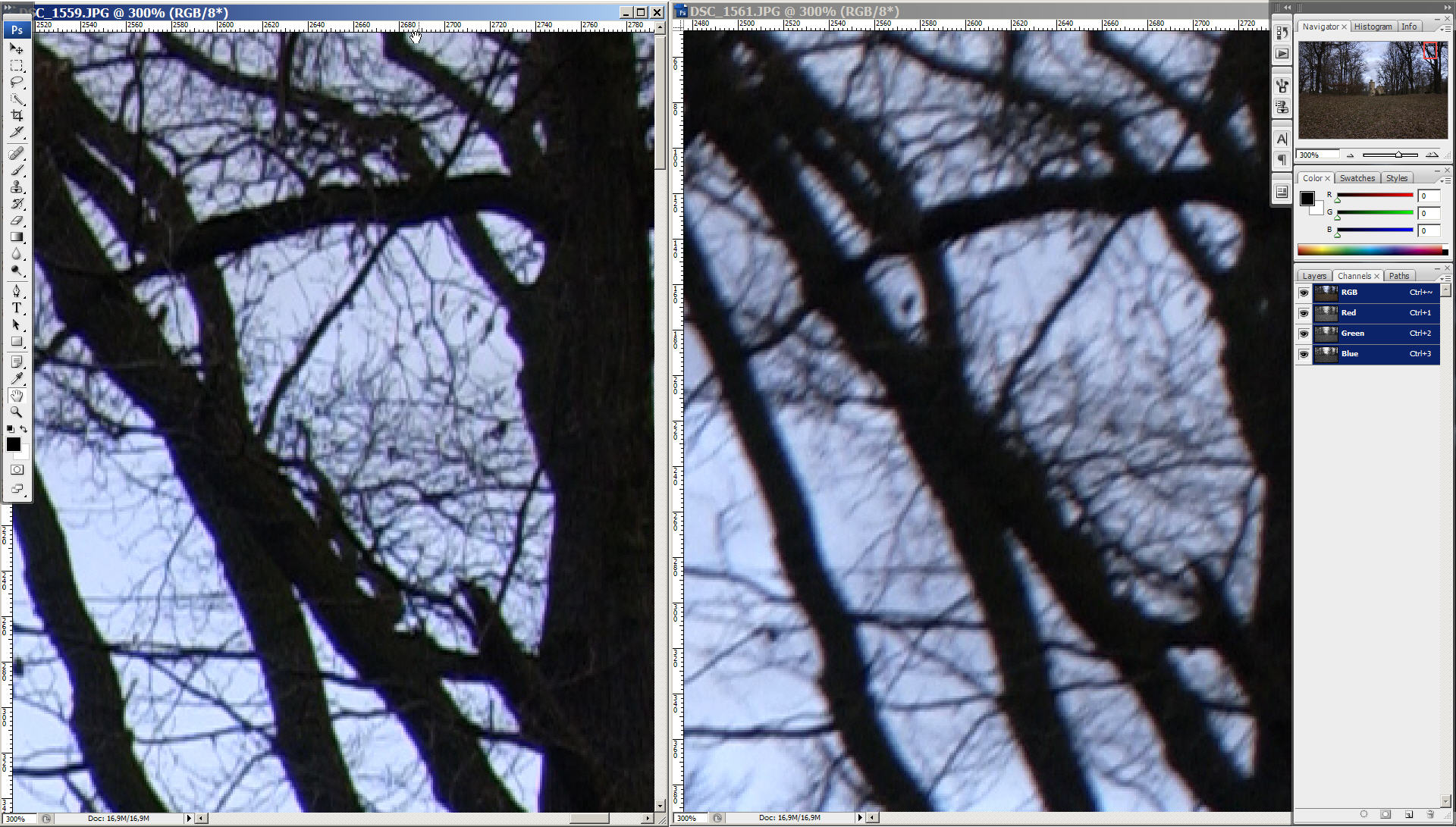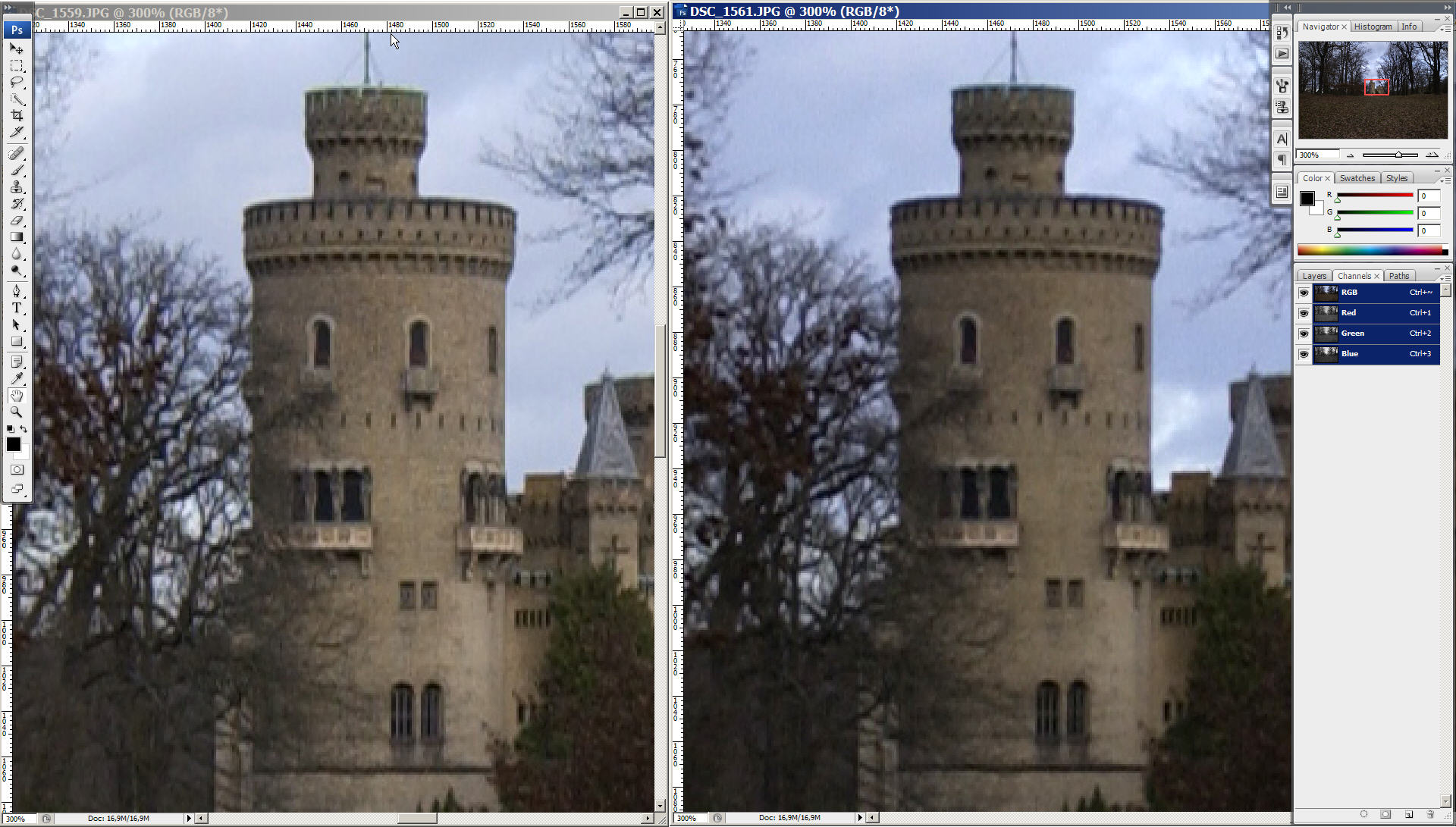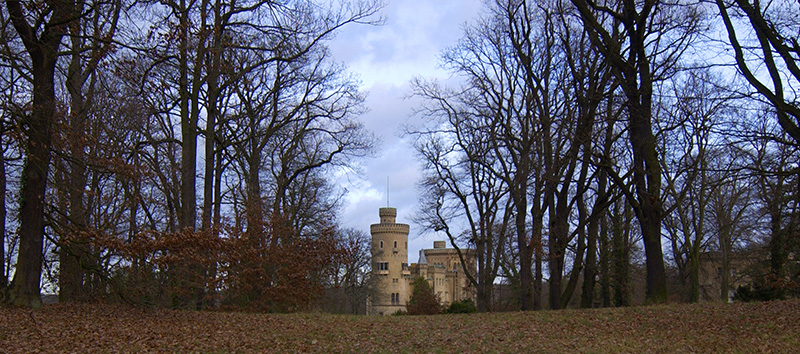|
- The Tokina AT-X 124 AF Pro DX zoom lens - |
Versioning:
|
The Tokina 12-24 AT-X Pro is one of a series of lenses that brings back wide angles to DSLRs. Due to the fact that all DSLRs from Nikon use the APS-C sensor size all non-DX lenses that are used with these cameras are only used in a crop mode. The edges of the optical system are not used with this sensor size. As Nikon has no full frame DSLR camera at the time of writing new wide angle lenses that fill the original 17-35 mm area had to be introduced. The series of 12-24 mm zoom lenses (available from (Sigma), Tamron, Tokina and Nikon) is approx. equivalent to a 18-36 mm lens. Unfortunately the wider focal length of the 12-24 mm lens design has some disadvantages. The effective view angle is equivalent to a 18-36 mm lens but the depth of field is not. The reason is that the focal length is indeed different and it is therefore hard to regain the smaller depth of field of the 35mm lens even when the lens is wide open (maximum aperture unfortunately f = 4). For some people this is a reason to debate the full frame digital sensor, as these chips would bring back the small depth of field and lenses would be usable without any crop factor. The other issue is signal to noise ratio. Larger sensors could host larger sensitive elements with better high ISO noise characteristics. The downside of the APS-C format for wide angle freaks is the advantage for bird and sports photographers because a 70-200 tele zoom lens changes to a 105-300 mm zoom lens with the same opening ratio of lets say 2.8. Of course there is no change in depth of field as you would receive when switching to the original 300 mm lens because the cropping doesn't change the focal length.
The Tokina AT-X Pro 12-24 is an affordable alternative to the Nikon (or Canon) equivalent lens. The optical performance is similar to the Nikon AFS 12-24 as has been test at various places (check e.g. this pages at the Nikonians or at KenRockwells site). To my surprise the Tokina 124 even out resolves the Nikon 20 mm AIS 2.8 at f4. Sharpness is very satisfying and distortion is well controlled. The only problem of the lens seems to be chromatic aberration (CA). The later isn't a real problem, because colour fringing can be corrected easily in the various RAW converters on the market (ACR does it well). The whole process of CA correction can be easily automated and using Nikon Capture NX its done by the NEF importer on the fly. The lens comes with a tulip shaped lens hood, front and rear caps and in a grey/blue box with a written lens-id label on it and sits in a card board kind of package in a not-sealed plastic bag. The front cap can easily scratch the front lens and is difficult to handle when the lens hood sits in place. The lens makes a very robust and solid impression and is a really heavy piece of equipment, which isn't a drawback in my opinion. The lens has a very nice crinkle paint finish comparable to some of the older Nikon AFD lenses. The focus and zoom rings are very smooth and well damped, comparable with manual Nikon AIS lenses. The samples I tested had however different characteristics. One sample that I ordered from Amazon had a very bumpy focus ring feeling when focused manually. Non of the Tokina 124 samples that I tried had a perfect symmetric aperture shape at f22. Something that I really don't like, but it does not have very much impact when shooting in the field, but could show up when the lens projects aperture reflections closed down to f22. I wouldn't call this a serious flaw but it is kind of annoying. Sample variation doesn't seem to be a big issue concerning the optical quality of the lenses that I tested. At least CA and sharpness was identical and not distinguishable but I had only few samples to look at, so there might be differences. The lens is DX design with no aperture ring and takes 77 mm front filters.
The Tokina 12-24 has an MF/AF switch that works on the basis of a clutch system that is used by dragging the focus ring towards the camera. The lens can be put easily in AF mode but the focus point can change a wee bit doing so. The Nikon AFS technique that allows direct interaction is more intuitive and precise i.m.o.. But for most shooting conditions this MF/AF clutch method will not be a big deal I guess. It should be noted that the Tokina 12-24 can be used on film (or on a full format) cameras between 18 mm and 24 mm. This is a nice bonus for the case that a full frame sensor from Nikon comes along, but I haven't any experiences with this lens on film yet. It should be also mentioned that the rear lens element is poking out of the lens mount impressively and it could be scratched therefore easily.
### Comparing the Tokina 124 f4 @20 mm @f11 with the Nikkor 20 mm f2.8 (@f11) (no sharpening). ###
Left: Tok124 at f11, right: Nikkor 20 mm 2.8 AIS at f11 (no sharpening).
Left: Tok124 at f11, right: Nikkor 20 mm 2.8 AIS at f11 (no sharpening). Both lenses show chromatic aberration and the Tokina is not free of it at 20 mm. The CA looks a bit different in both lenses. The Tok124 is also a bit sharper but this is probably a neglectable difference. Centre sharpness goes to the Tokina but again not a big deal here:
Left: Tok124 at f11, right: Nikkor 20 mm 2.8 AIS at f11 (no sharpening). At the border and wide open things look VERY different. Here the 20 mm Nikkor doesn't work very well (at least on a D1x):
Left: Tok124 at f4, right: Nikkor 20 mm 2.8 AIS at f4 (in camera sharpening). There is obviously some CA (blue/yellow) but the Nikkor 20 mm isn't free of it either (red/cyan fringe) and it is just unbelievable how soft the Nikkor is in the corners. These shots were done with a D1x writing both files in FINE JPG with low in camera sharpening at 1/400 s at f4. The situation is much better for the Nikkor when looking at the centre of the image:
Left: Tok124 at f4, right: Nikkor 20 mm 2.8 AIS at f4, this is the centre of the image at 300%, (in camera sharpening). Its obvious that the two lenses shouldn't be compared. The Nikkor 20 mm 2.8 AIS has been designed for film and the Tokina 12-24 f4 has been designed for APS-C sized sensors only, but the conclusion did surprise never less. The 20 mm lens is just not a good everyday 30 mm lens on a APS-C Sensor wide open! To sum this up: the Tokina is doing really well for the 500 Euro and is definitely a great deal. My main question is at the moment how the lens will perform on a full frame sensor between 18 and 24 mm :).
Parc Babelsberg, Potsdam, Germany, D1x, Tokina AT-X 12-24, f4. Sören Hese (c) 2007 |
|
